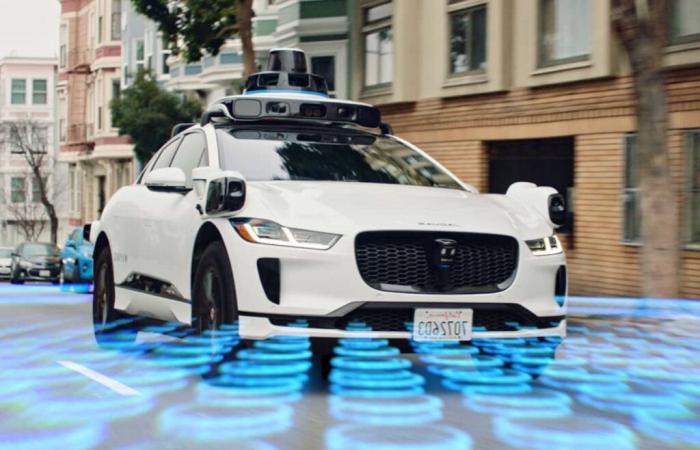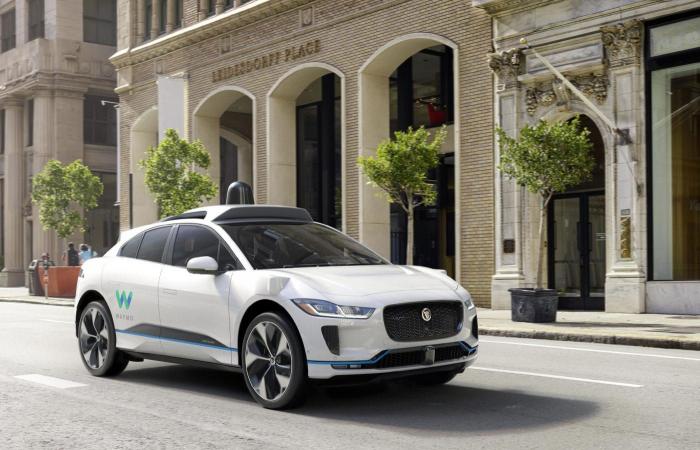Electric car news
Get ready for a futuristic experience in the heart of the City of Angels. Waymo, the pioneer of autonomous vehicles, has just taken a major step forward by opening its driverless taxi service to the general public in Los Angeles. This technological advance promises to radically transform our urban travel.
A gradual but promising deployment
As of Tuesday, any Los Angeles resident or visitor can now order a fully autonomous Waymo taxi via the Waymo One app. No more waiting time on the approval list, the adventure is now accessible to everyone. Los Angeles thus joins San Francisco and Phoenix in the very exclusive club of cities where Waymo operates its robotaxis services.
However, don’t expect to be able to explore every corner of the vast Californian metropolis. The current coverage area extends from Marina Del Rey and Playa Vista in the south, to Santa Monica and West Hollywood in the north, and Little Tokyo in the east. Popular neighborhoods like Silver Lake, Echo Park and Brentwood remain out of reach for the moment. Likewise, high traffic areas like the Sunset Strip or LAX International Airport are not yet served. It will likely be some time before autonomous systems are able to handle the chaos of a busy airport like LAX.
A revolutionary user experience
If you’ve never had the opportunity to try a self-drive taxi, I highly recommend giving Waymo a try. As an automotive journalist who has closely followed the development of autonomous driving technologies for years, I was initially skeptical. But a weekend in San Francisco on the Waymo completely changed my perception.
The experience is simply breathtaking. The fluidity and precision with which these autonomous vehicles navigate urban traffic is impressive. You will be surprised how quickly you will feel comfortable with your robot driver. It’s truly one of the most impactful technological experiences I’ve ever had.

Pricing and availability: what you need to know
In terms of prices, expect to pay slightly more than a regular Uber, but the price is still comparable when you include the tip you would usually give a human driver. Please note that it is not possible (nor necessary) to tip your Waymo robot driver.
Concerning waiting times, they can be a little longer than with a traditional VTC service. Additionally, periods of high demand may have a greater impact on availability, as the number of robotaxis in circulation does not adapt as easily as that of human drivers.
The deployment of Waymo autonomous taxis in Los Angeles represents a technological feat, but also a major regulatory challenge. The city, known for its urban sprawl and heavy traffic, offers a particularly demanding testing ground for autonomous vehicles.
Waymo had to adapt its algorithms to deal with several local specificities:
- Management of lanes reserved for buses and high occupancy vehicles (HOV)
- Navigating the narrow, winding streets of the Hollywood Hills
- Interaction with the numerous pedestrians, cyclists and electric scooters omnipresent in certain neighborhoods
On the regulatory side, Waymo had to work closely with local authorities to obtain the necessary authorizations. This process involved extensive testing and demonstrations to prove the reliability and safety of the system.
Environmental and social impact
The deployment of Waymo autonomous taxis in Los Angeles is part of a broader approach to transforming urban mobility. These vehicles, based on the Electric Jaguar I-Pacepromise to significantly reduce the carbon footprint of city travel.
Indeed, the optimized use of these vehicles could contribute to:
- Reduce the number of vehicles in circulation, and consequently, traffic jams
- Reducing noise pollution thanks to electric motorization
- Improve road safety by eliminating human errors, responsible for the majority of accidents
From a social point of view, this technology could also improve the mobility of elderly people or people with reduced mobility, offering them a new form of independence in their travels.
Future prospects for Waymo and autonomous mobility
The launch of the Waymo service in Los Angeles marks a crucial step in the development of autonomous mobility. If the experience proves conclusive in this megacity with multiple challenges, it could open the way to a broader deployment in other large American and even international cities.
Ultimately, we can imagine a further integration of these autonomous vehicles into the urban transport ecosystem. For example, a seamless connection with existing public transport could create an efficient and sustainable multimodal mobility network.
Although the Waymo service will likely not completely replace traditional ride-hailing services in the near future, it undoubtedly represents the future of urban mobility. If you have the opportunity to visit Los Angeles, I highly encourage you to give it a try. You will have the opportunity to experience, in preview, what could well become the norm in our cities of tomorrow.
Written by François Zhang-Ming
I have always shown a keen interest in science and technology from a very young age. I have a dual culture, Chinese through my mother and French through my father but also through my studies, which allows me to be very familiar with the technological innovations of the Far East.
React to the article








